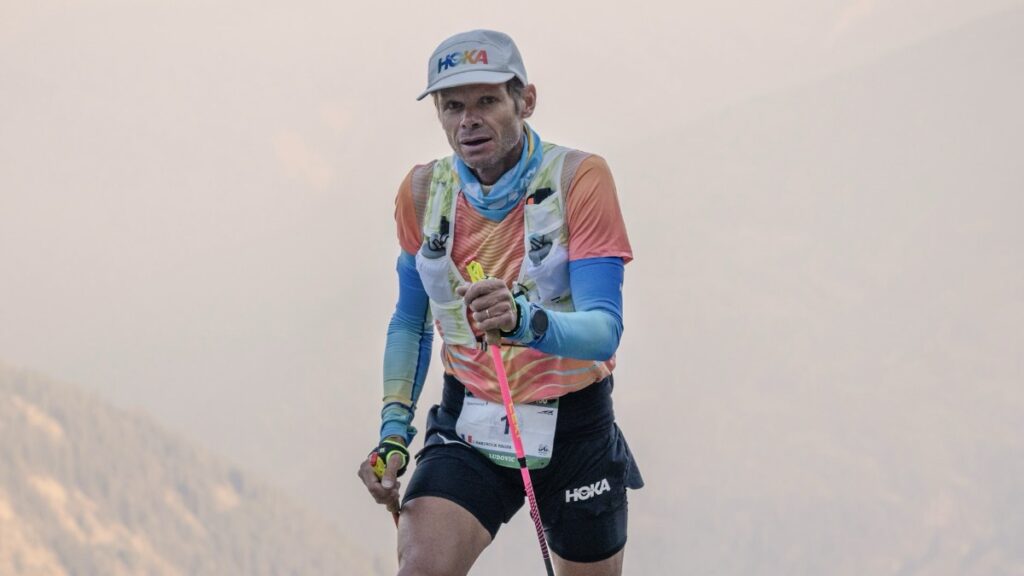In the 2025 Hardrock 100, Ludovic Pommeret claimed a dominant victory, solidifying his status as a top-tier ultrarunner with extensive experience in technical mountain races. His approach displayed a well-conceived strategy that can serve as a valuable reference for experienced trail and ultrarunners. Pommeret chose to manage his energy by employing a conservative pacing strategy on ascents while capitalizing on his descending skills to gain time on the technical downhills. This balanced mindset of risk management showcases a sensible way to conserve energy and optimize performance in challenging conditions.
Pommeret admitted to difficulties posed by smoke in the early stages of the race, a concern that underlines the importance of adaptability in ultrarunning. As conditions change, so too should a runner’s strategy. Pommeret’s initial inclination to withdraw due to smoke highlights how environmental factors can impact not only performance but the overall decision to continue a race. Fortunately, changing wind conditions allowed him to proceed, demonstrating the necessity of being prepared to reassess one’s situation under fluctuating circumstances.
The pacing decisions he made were critical. Pommeret’s emphasis on maintaining a comfortable uphill pace while strategically pushing the downhill sections illustrates a tactical focus that many experienced runners can appreciate. During the race, he consciously avoided fixating on course record pacing and instead prioritized his rhythm and the management of effort relative to what his body could handle. This approach aligns well with the common wisdom that maintaining awareness of one’s limits is crucial in mountain ultras, particularly when the terrain becomes unpredictable.
Pommeret faced distinct challenges, including a minor injury sustained from hitting his face on a rock while exiting a tunnel, underscoring that unexpected issues can arise and affect runners during intricate mountain courses. How he handled this setback — not succumbing to panic but instead managing his situation pragmatically — further highlights the mental fortitude required in ultrarunning.
Later in the race, Pommeret’s tactical decision-making became even clearer. He acknowledged that while he was comfortable with his lead, the last segments of the course posed their own challenges, making it vital to maintain focus and a steady pace. Experienced runners understand the mental and physical toll that fatigue can take in the latter stages and can glean from Pommeret’s experience the importance of staying vigilant, particularly when the course transitions into more technical terrain.
Throughout the race, Pommeret also managed to engage with his pace team effectively, signaling the importance of teamwork and communication in races of this magnitude. The collaboration in pacing strategies among team members can be pivotal in executing smart race management. His experience with pacing gave him confidence to focus on his own efforts rather than being distracted by competitors, a strategy that often leads to better decisions in terms of pacing and energy expenditure.
The conversation about equipment also arose during Pommeret’s experience, highlighting an ongoing discussion in the ultrarunning community — particularly within mountain contexts. For example, while discussing the use of poles, Pommeret articulated a preference for poles in more technical sections, where they could provide critical stability. This reflects the broader trend among experienced ultrarunners who recognize that the effectiveness of gear can shift dramatically based on the terrain, making it essential to adjust gear selection according to course characteristics.
As he neared the finish, Pommeret allowed himself to relax, appreciating the beauty of the final descent rather than racing against the clock. This nuanced understanding of fatigue management and pacing towards the end of a long race, coupled with an awareness of competitors’ positions, is invaluable for those who regularly tackle such challenges. It serves as a reminder that, while competition is a primary goal, the journey and the experience of engaging with the terrain and race conditions are also crucial elements of ultrarunning.
Pommeret’s victory and the insights gleaned from his race strategy at the Hardrock 100 reinforce an important takeaway for seasoned trail and ultrarunners: successful mountain racing requires a blend of meticulous pacing, adaptive strategy, and an acute awareness of both body and environment. Such considerations not only enhance performance but also enrich the overall experience of racing in demanding mountain settings. This understanding serves as a reminder that flexibility in approach and resilient mental strategies can be just as pivotal as physical preparation in navigating the complexities of ultrarunning.
